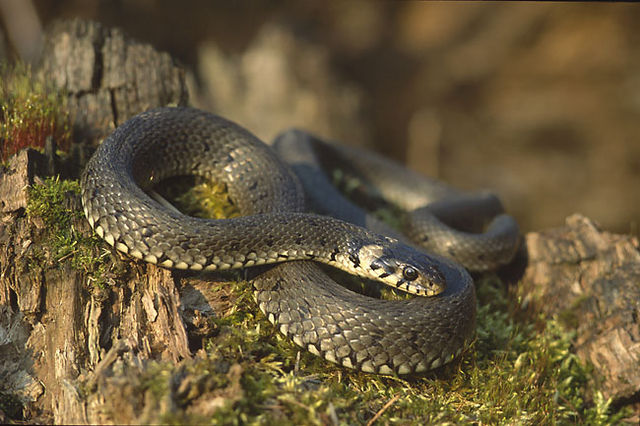
By the end of the century, extreme heat could put 40% of land vertebrates in danger.
More than 40% of land vertebrates will be threatened by extreme heat by the end of the century under a high emissions scenario, with freak temperatures that were once considered to be the norm likely to become the norm, according to new research warning of “disastrous consequences for wildlife.”
As a result of global warming caused by humans, reptiles, birds, amphibians, and mammals are experiencing increasingly frequent, prolonged, and intense bouts of extreme heat. A new study warns that this poses a significant threat to the planet’s biodiversity.
According to the Nature paper, 41% of land vertebrates will experience extreme thermal events by 2099 under a high emissions scenario of 4.4C warming.
100% of species would be exposed to extreme heat in the worst affected areas, such as the Mojave desert in the United States, Gran Chaco in South America, the Sahel and Sahara in Africa, and portions of Iran and Afghanistan. Although it is impossible to determine whether these regions would be inhabitable, it is likely that additional species would go extinct.
By looking at maximum temperature data from 1950 to 2099, researchers were able to map the effects of extreme heat on more than 33,000 land vertebrates. To determine how vulnerable animal populations would be, they looked at five global climate models’ predictions based on different levels of greenhouse gas emission and the distribution of terrestrial vertebrates.
“A couple of studies have shown recent climate warming trends match the 4.4C scenario much better than the other scenarios,” said lead author Gopal Murali, who was at Ben-Gurion University of Negev, Israel when he carried out the research. “We wanted to highlight the disastrous consequences for wildlife if we end up with a high, unmitigated emission scenario.”
The most affected animals were amphibians and reptiles; respectively, 55% and 51% of amphibians and reptiles were likely to experience extreme heat events by the end of the century, while 26% and 31% of mammals were affected. Because they typically live in smaller temperature ranges, reptiles and amphibians are the most vulnerable.
According to the report, 29% of terrestrial vertebrates will experience extreme heat events under 3.6C of warming. “Deep greenhouse gas emissions cuts are urgently needed to limit species’ exposure to thermal extremes,” the researchers wrote. This decreases to 6% if warming is limited to 1.8C.
Experts estimate that the 2021 heatwave along Canada’s Pacific coast resulted in the deaths of more than one billion marine animals, demonstrating that heat stress can result in dramatic die-offs and the destruction of entire ecosystems. Murali stated, “Heatwaves have become frequent. We see them every summer, with new records set all the time, and they have drastic impacts on wildlife. They can wipe out entire ecosystems overnight. But no large-scale studies have looked at how such extreme temperature events are going to affect biodiversity in the future.”
More than 5 million people worldwide die each year from extreme temperatures, and the number of deaths caused by heat continues to rise, according to research. According to Uri Roll of Ben-Gurion University of the Negev, “If we follow the current trends, the future is bleak.”
While humans are able to shelter, and many can drink as much as they want and refrigerate their food, “this is obviously impossible for animals”, said Roll. “Ultimately, this will greatly affect many species – and this is just one facet of the many changes that are expected. We are not looking at changes of habitat or an increase in invasive species, or changes in rainfall [in the study]”
Prof Nathalie Pettorelli, an applied ecologist from the Zoological Society of London, who was not involved in the research, said the report provided “a good estimate” of the pressure that extreme heat may pose to land vertebrates by the end of the century, but added that it “fails to look at conservation status in relation to exposure. Taking this into consideration would help prioritise action by identifying regions that are both likely to be hotspots for extreme heat events in the future and where things are already not looking good.
A University of Idaho associate professor of wildlife sciences who was not involved in the research stated: “The authors make a compelling case that if current levels of emissions continue unchecked, a large percentage of the planet’s fauna will face unprecedented temperature extremes by the end of the century, especially in mid-latitude deserts, shrublands and grasslands.”
——————————————————————————
At Natural World Fund, we are passionate about stopping the decline in our wildlife.
The declines in our wildlife is shocking and frightening. Without much more support, many of the animals we know and love will continue in their declines towards extinction.
When you help to restore a patch of degraded land through rewilding to forests, meadows, or wetlands, you have a massive impact on the biodiversity at a local level. You give animals a home and food that they otherwise would not have had, and it has a positive snowball effect for the food chain.
We are convinced that this is much better for the UK than growing lots of fast-growing coniferous trees, solely to remove carbon, that don’t actually help our animals to thrive.
This is why we stand for restoring nature in the UK through responsible rewilding. For us, it is the right thing to do. Let’s do what’s right for nature!
Support our work today at https://naturalworldfund.com/ and join in the solution!

